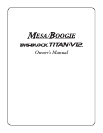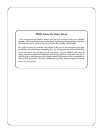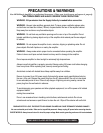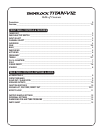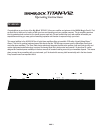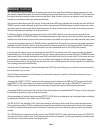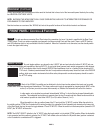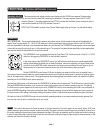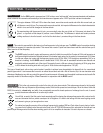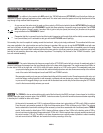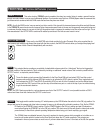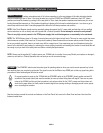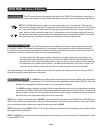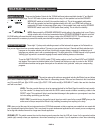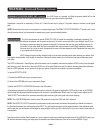
PAGE 5
GAIN: (Continued)
As the GAIN control is increased past 12:00 a richer, more “well-rounded” voice becomes dominant and headroom
starts to diminish in increments until eventually, a tube overdrive sound appears as the 12AX7 input tube is driven into saturation.
The region between 12:00 and 2:30 is where the classic, warm tube sounds reside and within this narrow band you
will discover a world of tone. Tiny increments here produce subtle, but important differences in the attack characteristic
which in turn, can feel like changes in the time domain.
By experimenting with the amount of gain, you can actually voice the amp to feel as if it bounces just ahead of the
groove - or lays back a little deeper to produce a more Fatback feel. The difference in attack and sustain produces
striking results as to how the bassist - and in fact the whole band - perceives things in the time domain.
BASS:
This control is responsible for the basic mix of low frequencies in the tube pre-amp. The BASS control is an active shelving
type control as opposed to a passive style control. This means that a center Q point has been chosen and this control allows you to
either boost or cut that frequency.
The BASS control is actually a gain and frequency control all rolled into one with the Q center at 55Hz and harmonics in
both low and high directions are affected because of its broader band nature. As the control is increased past 12:00 there
is a 6db per octave rise in gain with the frequency topping out at 321Hz. With 12:00 straight-up representing “flat” (a no
boost/no cut setting). As the BASS control is dialed below 12:00, 55Hz and all associated harmonics are reduced and
eventually notched completely out of the signal. Conversely, there is a 6db per octave cut beginning at 55Hz going down
to 20Hz where the shelving ends with a cut gain of -20db as the control approaches 7:30 (off).
This type of broad band, active rotary control makes it possible to achieve bass characteristics far beyond that of a conventional
passive type control. It can increase the low end to an almost absurd level and with a flick of the wrist, dip it to near transistor radio
skinniness. Needless to say, with any control this powerful a certain amount of finesse must be applied to achieve musical results. Be
especially mindful of this when using the 5 Band Parametric in conjunction with the BASS control.
PASSIVE MID:
This is the only passive style control in the string of rotary tone controls. This scheme was chosen for its inherently
musical blend and for the way the passive style midrange control, with its wide spread and smooth taper, fills in the holes. Unlike the
BASS, this control is a boost only, and while it can competently remove this broad spectrum of midrange from the mix, it cannot
provide the extreme attenuation of an active style control.
You will find, as we did, that this control works amazingly well for shaping the midrange frequencies with a natural earthi-
ness and character that is a perfect counterpart to its neighbors. It is hard to dial wrong with this more forgiving control
as it seems to give you just enough and no more.
For radical and specific scooping of the midrange frequencies for modern R&B and Funk styles, there is plenty of notch-
ing power that is infinitely more accurate to be found in the ACTIVE MID. Because of this, we opted for the tried and true
passive style midrange control that has been working great in all of our amplifiers for decades. It’s hard to improve on a classic.
FrONT PANeL: CONTrOLs & FeATures (Continued)



